
How to Use ESP32 DevKitC (WROOM-32): Examples, Pinouts, and Specs
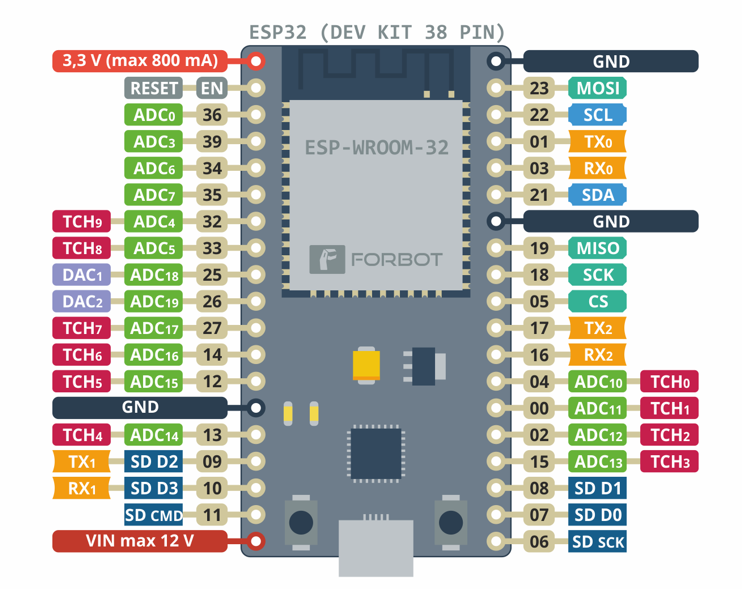
 Design with ESP32 DevKitC (WROOM-32) in Cirkit Designer
Design with ESP32 DevKitC (WROOM-32) in Cirkit DesignerIntroduction
The ESP32 DevKitC (WROOM-32) is a versatile development board built around the ESP32 chip, which integrates Wi-Fi and Bluetooth capabilities. This board is widely used in Internet of Things (IoT) applications, prototyping, and embedded systems development. Its compact design, powerful dual-core processor, and extensive connectivity options make it a popular choice for developers and hobbyists alike.
Explore Projects Built with ESP32 DevKitC (WROOM-32)
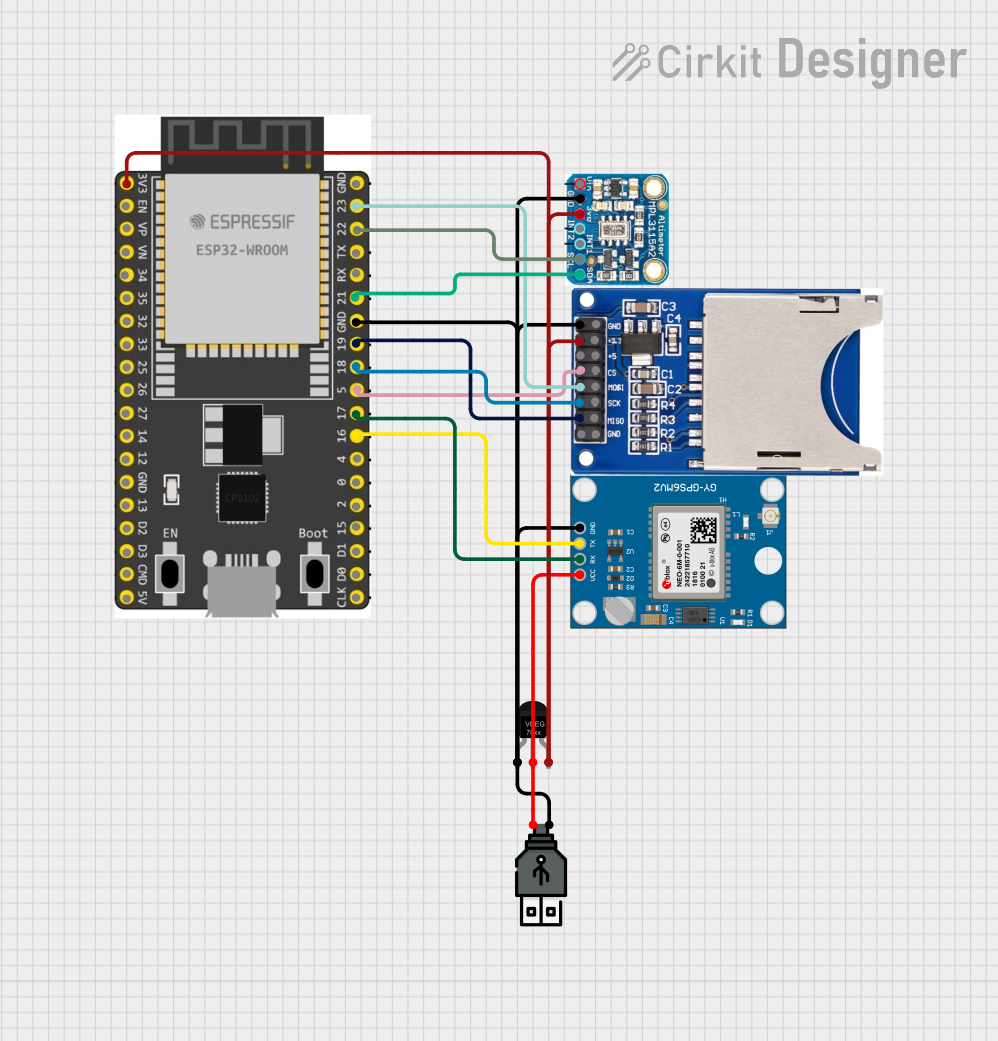
 Open Project in Cirkit Designer
Open Project in Cirkit Designer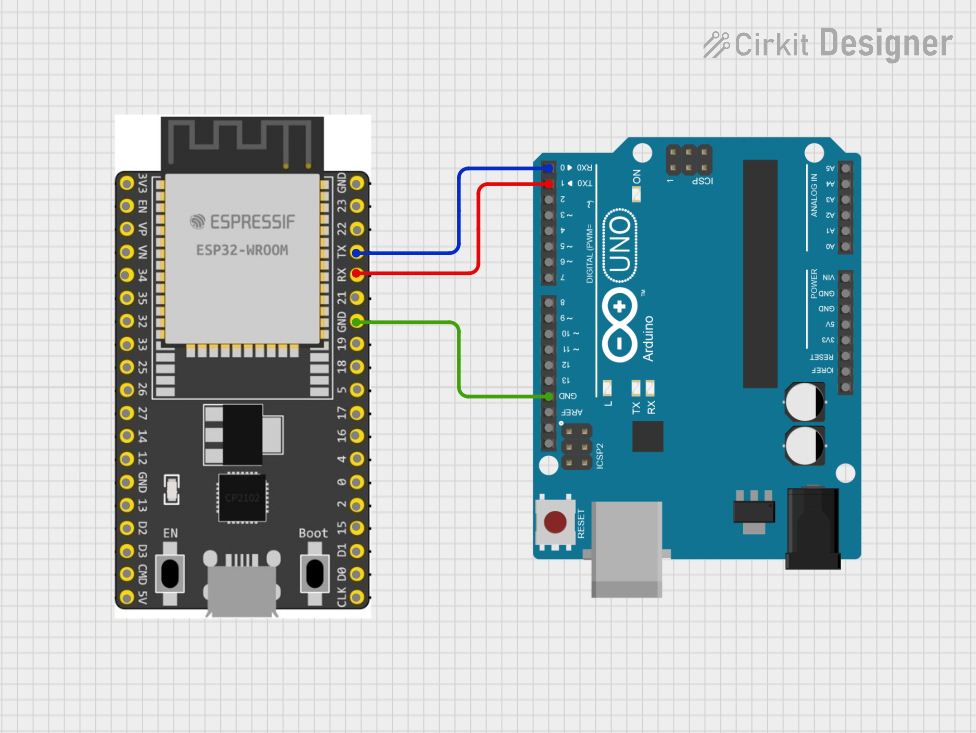
 Open Project in Cirkit Designer
Open Project in Cirkit Designer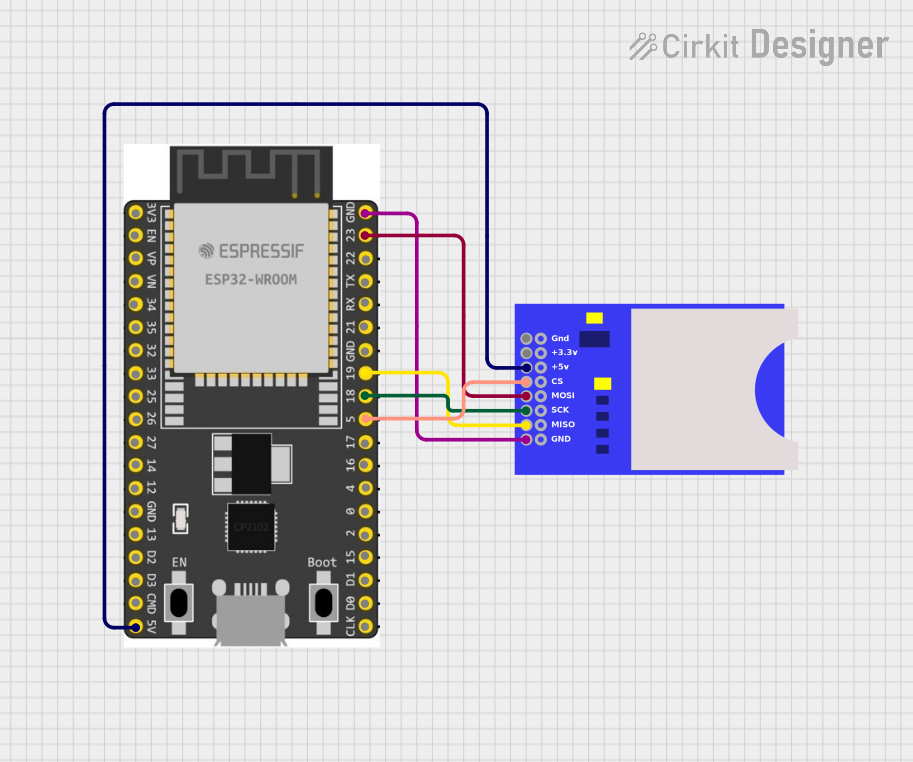
 Open Project in Cirkit Designer
Open Project in Cirkit Designer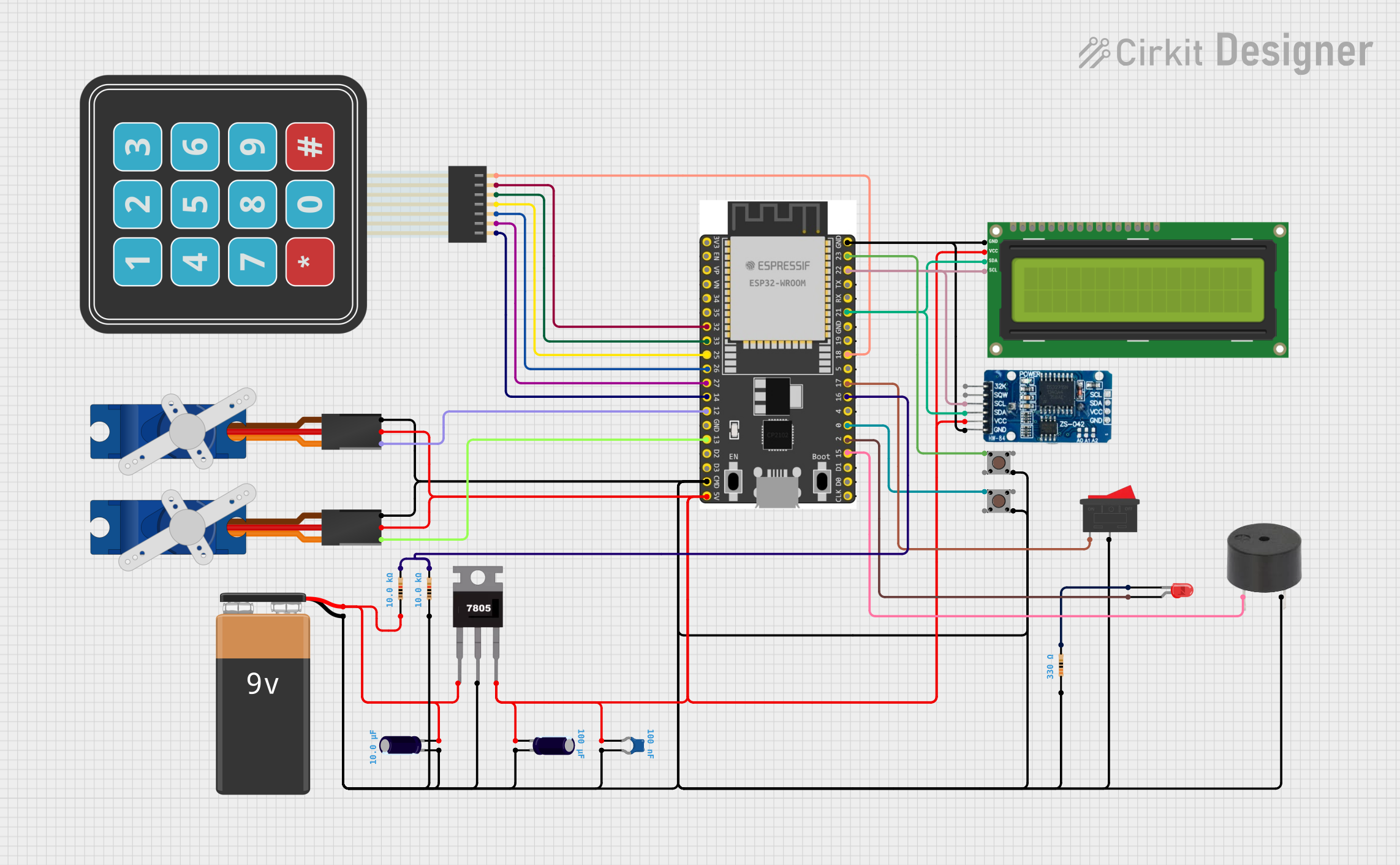
 Open Project in Cirkit Designer
Open Project in Cirkit DesignerExplore Projects Built with ESP32 DevKitC (WROOM-32)

 Open Project in Cirkit Designer
Open Project in Cirkit Designer
 Open Project in Cirkit Designer
Open Project in Cirkit Designer
 Open Project in Cirkit Designer
Open Project in Cirkit Designer
 Open Project in Cirkit Designer
Open Project in Cirkit DesignerCommon Applications and Use Cases
- IoT devices and smart home automation
- Wireless sensor networks
- Wearable technology
- Robotics and drones
- Prototyping for industrial automation
- Bluetooth Low Energy (BLE) applications
Technical Specifications
The ESP32 DevKitC (WROOM-32) is equipped with the ESP32-WROOM-32 module, which includes a dual-core Xtensa® 32-bit LX6 microprocessor. Below are the key technical details:
Key Technical Details
- Processor: Dual-core Xtensa® 32-bit LX6, up to 240 MHz
- Flash Memory: 4 MB (varies by model)
- SRAM: 520 KB
- Wi-Fi: 802.11 b/g/n (2.4 GHz)
- Bluetooth: v4.2 BR/EDR and BLE
- Operating Voltage: 3.3 V
- Input Voltage (via USB): 5 V
- GPIO Pins: 34 (multipurpose)
- ADC Channels: 18 (12-bit resolution)
- DAC Channels: 2
- PWM Outputs: 16
- Communication Interfaces: UART, SPI, I2C, I2S, CAN
- Operating Temperature: -40°C to 125°C
Pin Configuration and Descriptions
The ESP32 DevKitC has a total of 38 pins. Below is a summary of the key pins and their functions:
| Pin | Name | Description |
|---|---|---|
| 1 | 3V3 | 3.3 V power output |
| 2 | GND | Ground |
| 3 | EN | Enable pin (active high, used to reset the chip) |
| 4 | IO0 | GPIO0, used for boot mode selection during programming |
| 5-39 | GPIO1-GPIO39 | General-purpose input/output pins (multiplexed for ADC, DAC, PWM, etc.) |
| 21 | TXD0 | UART0 Transmit |
| 22 | RXD0 | UART0 Receive |
| 25 | ADC1_CH0 | Analog input channel 0 |
| 26 | DAC1 | Digital-to-Analog Converter output 1 |
| 27 | DAC2 | Digital-to-Analog Converter output 2 |
| 28 | VIN | Input voltage (5 V via USB or external power supply) |
Note: Some GPIO pins have specific functions or limitations. Refer to the ESP32 datasheet for detailed pin multiplexing information.
Usage Instructions
How to Use the ESP32 DevKitC in a Circuit
Powering the Board:
- Connect the board to your computer via a micro-USB cable for power and programming.
- Alternatively, supply 5 V to the VIN pin or 3.3 V to the 3V3 pin.
Programming the Board:
- Install the Arduino IDE and add the ESP32 board support package.
- Select "ESP32 Dev Module" from the Tools > Board menu.
- Connect the board to your computer and select the appropriate COM port.
Connecting Peripherals:
- Use the GPIO pins to connect sensors, actuators, or other peripherals.
- Ensure that the voltage levels of connected devices are compatible with the ESP32 (3.3 V logic).
Uploading Code:
- Write your code in the Arduino IDE or another supported environment.
- Press the "Upload" button to flash the code to the ESP32.
Example Code: Blinking an LED
The following example demonstrates how to blink an LED connected to GPIO2:
// Define the GPIO pin where the LED is connected
const int ledPin = 2;
void setup() {
// Set the LED pin as an output
pinMode(ledPin, OUTPUT);
}
void loop() {
// Turn the LED on
digitalWrite(ledPin, HIGH);
delay(1000); // Wait for 1 second
// Turn the LED off
digitalWrite(ledPin, LOW);
delay(1000); // Wait for 1 second
}
Important Considerations and Best Practices
- Voltage Levels: Ensure all connected devices operate at 3.3 V logic levels. Use level shifters if necessary.
- Boot Mode: GPIO0 must be pulled low during programming. This is typically handled automatically by the USB-to-serial converter.
- Power Supply: Use a stable power source to avoid unexpected resets or instability.
- Pin Multiplexing: Be aware of pin multiplexing and avoid conflicts when using peripherals like ADC, UART, or SPI.
Troubleshooting and FAQs
Common Issues and Solutions
The board is not detected by the computer:
- Ensure the USB cable is functional and supports data transfer.
- Install the correct USB-to-serial driver for your operating system.
Code upload fails:
- Check that the correct board and COM port are selected in the Arduino IDE.
- Press and hold the "BOOT" button on the board while uploading the code.
Wi-Fi connection issues:
- Verify the SSID and password in your code.
- Ensure the Wi-Fi network operates on the 2.4 GHz band (ESP32 does not support 5 GHz).
Unstable operation or random resets:
- Use a reliable power source with sufficient current (at least 500 mA).
- Avoid using GPIO pins that are reserved for internal functions.
FAQs
Q: Can I use the ESP32 DevKitC with MicroPython?
A: Yes, the ESP32 supports MicroPython. You can flash the MicroPython firmware to the board and use it for development.
Q: How do I use the Bluetooth functionality?
A: The ESP32 supports both Bluetooth Classic and BLE. You can use the Arduino IDE or ESP-IDF to write Bluetooth applications.
Q: What is the maximum current draw of the ESP32?
A: The ESP32 can draw up to 500 mA during peak operation, especially when using Wi-Fi or Bluetooth.
Q: Can I power the ESP32 with a battery?
A: Yes, you can use a LiPo battery with a suitable voltage regulator or connect it to the VIN pin.
By following this documentation, you can effectively use the ESP32 DevKitC (WROOM-32) for your projects and troubleshoot common issues.